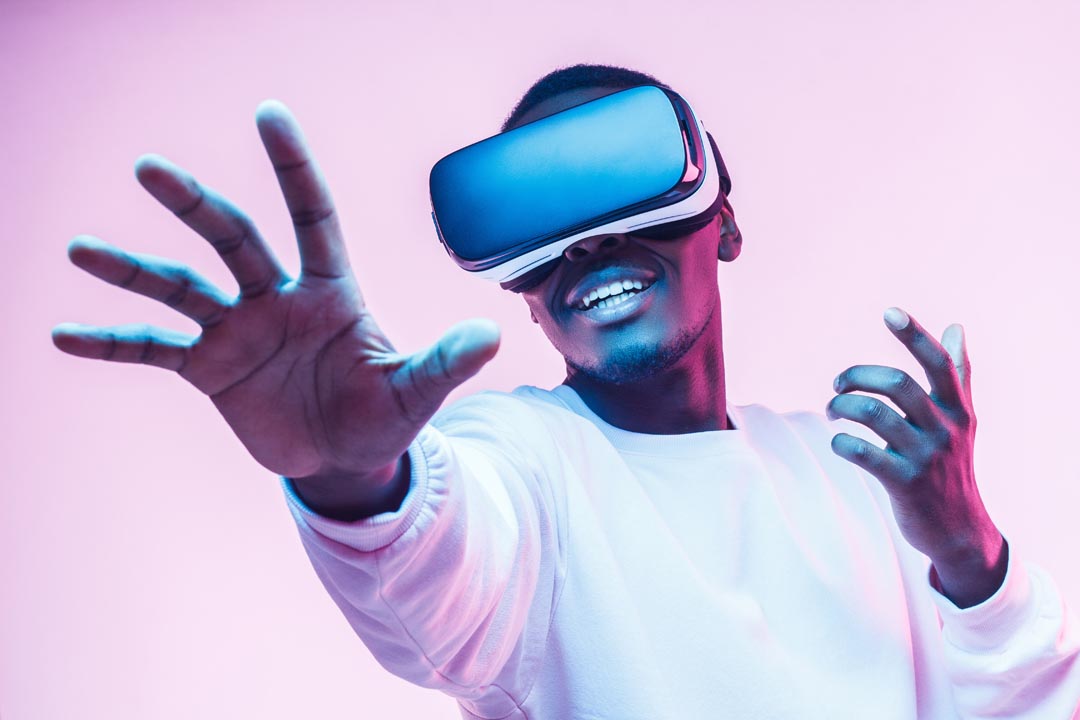As Virtual Reality gains traction globally, Brad Koch looks at the pivotal role it plays in breaking down barriers for connection and making the workplace feel more interconnected than ever before
Virtual Reality (VR) steadily grew in popularity throughout 2023 and all signs indicate that its momentum won’t be slowing down in 2024. This is due in large part to the barrier of entry being lowered as companies like Google and Meta make VR accessible to more people. This uptick in accessibility and users lead to greater competition and more competitive pricing making it a more viable training solution in every industry.
Investment in quality software and professionals to develop it will ensure VR is not just a fad
Not only is this tool now more accessible, but it’s also in some cases more cost-effective for organisations than other training methods. Many early iterations of VR training began in the oil and gas industry. These companies could both afford the higher cost of entry and gain a greater return on investment, as it is less costly to simulate touring an active oil platform than actually flying to one.
This technology comes with a myriad of benefits and ways to capitalise on its capabilities. However, organisational leaders must not get too caught up in the excitement of this new technology and instead carefully consider how they can successfully implement it into their own training programs.
Understand the potential of VR
With increased access to this technology, we’re beginning to see more global enterprises such as Walmart and McDonald’s and even skilled trades use VR technology for their training programs. In fact, we have seen evidence that learners absorb information faster and are 275% more confident when it comes to applying skills they learned in training in the real world when using this technology. This is a 40% improvement over classroom and 35% improvement over e-learn training.
For example, hospitals are large, complex buildings. Knowing where medical supplies and equipment are located can be critical in emergency situations where time is of the essence. Practicing drills in an active hospital environment can be disruptive, but in VR, trainees can learn the ropes in a controlled environment before being thrown into an emergency scenario.
On the flip side of the coin is the ability to synthesise new environments with new hazards that trainees have to react to in real time. Military operations and law enforcement can use VR to simulate hostile or dangerous territory, and pilots can navigate severe weather or maintenance problems safely on the ground.
Cost-effective doesn’t always mean inexpensive
In many situations, VR can be a cost-effective tool, but that doesn’t mean it might not require a significant investment up front. VR hardware is expensive and can be costly to maintain, so training leaders need to be sure to budget for those items when considering whether or not to implement this technology.
In order to ensure VR is a viable training medium, it is critical that the training software is intentional and well-developed. With the excitement around VR, a number of companies and start-ups will be capitalising on it and coming out with many different products to use with it. Companies cannot jump into unproven waters at the risk of their important training becoming a gimmick. Investment in quality software and professionals to develop it will ensure VR is not just a fad.
Finding the right virtual fit
While VR is rapidly increasing in popularity, it is still new and evolving technology. A majority of users who are already familiar with its capabilities are likely technology gadget fans or video gaming enthusiasts who already own VR headsets. With that point in mind, it’s likely not common that a wide swath of your workforce has used this technology in their day-to-day lives.
Unfamiliarity with virtual reality can cause side effects such as “cybersickness,” a motion sickness-like experience that is visually induced by virtual reality. As people try VR for the first time, it’s important to remember small doses are key, which is both helpful for deterring cybersickness and retaining information via microlearning.
Virtual connections
When it comes to virtual reality, we are still merely scratching the surface of how we can maximize its capabilities. We found ourselves at a turning point where the barrier to entry for this technology is lower making it more accessible to more users and businesses.
As VR becomes more popular and prominent, it is only going to get better, easier to use, more cost-effective and will reach a wider audience. As more companies in industries around the globe delve into VR, their employees are going to be more connected than ever.
Ultimately, VR can help break down barriers for global connection and make it really feel like we are in the same room as our co-workers who are physically on the other side of the world.
Brad Koch is the Vice President of Industry Management & Partnerships at Open LMS




